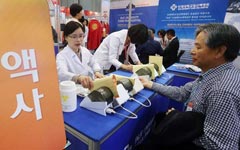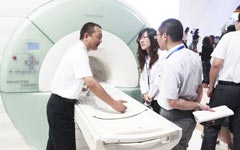Finding real wealth in health industry
By BEN YUE in Doha, Qatar (China Daily) Updated: 2014-02-17 08:56Across Asia, healthcare costs are rising faster than countries' ability to meet them. Experts argue that the answer to the crisis is not going to come from doing more of the same.
Instead, a fundamental shift toward harnessing the patients and the public who care about improving their own health could be the solution.
|
 |
|
 |
In India, patients are helping to combat counterfeit medicine by using free text messaging to verify authenticity through the organization mPedigree Network.
The network partnered with several pharmaceutical manufacturers to place an authenticity code on product packaging so that patients, providers, distributors and manufacturers can utilize the free service to confirm the product's authenticity at the point of sale or transfer.
According to a report published by the Economist Intelligence Unit, the annual average per capita healthcare spending in the Asia-Pacific region has more than doubled between 2001 and 2011, from $150 to $362. It is expected to reach $546 by 2016.
The soaring costs spent on the healthcare sector stimulate the creation of higher quality products with lower costs to suit the demands of local markets.
More global medical giants such as GE Healthcare, Bayer HealthCare Pharmaceuticals and Medtronic Inc have either set up global research and development centers or moved headquarters to Asia to meet the special needs of the local market.
Most healthcare innovations are now made to treat NCDs, with experts believing that Asia is leading the way in innovations to deal with the rising cases.
NCDs such as diabetes, mental health problems and antimicrobial resistance (or drug resistance) are becoming more common in everyday life in Asia, driven by the changing lifestyle patterns and widespread urbanization.
According to WISH, deaths from communicable diseases are dramatically decreasing globally, while deaths from NCDs are projected to increase. The number of global NCD-related deaths is estimated to surge from 28.1 million per year in 1990 to around 49.7 million per year in 2020.
In Southeast Asia alone, more than 7.9 million people die from NCDs every year, according to the World Health Organization (WHO). The number is projected to increase by 21 percent over the next decade.
To make the situation worse, 34 percent of NCD-related deaths in the region occur before the age of 60, compared with 23 percent in the rest of the world.
Cardiovascular diseases alone account for a quarter of all deaths, followed by chronic respiratory diseases, cancers and diabetes.
|
 |
 |
- NHTSA says finds no 'defect trend' in Tesla Model S sedans
- WTO rare earth ruling is unfair
- Amway says 2014 China sales may grow 8%
- President Xi in Europe: Forging deals, boosting business
- CNOOC releases 2013 sustainability report
- Local production by Chery Jaguar Land Rover this year
- Car lovers test their need for speed in BMW Mission 3
- China stocks close mixed Monday

















